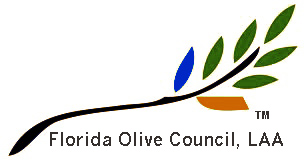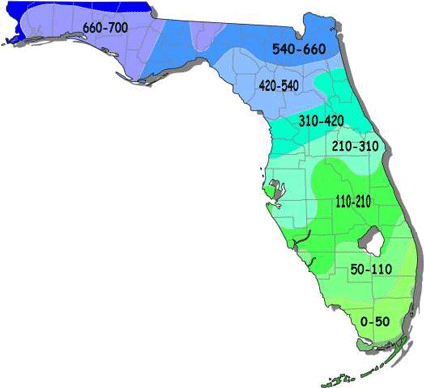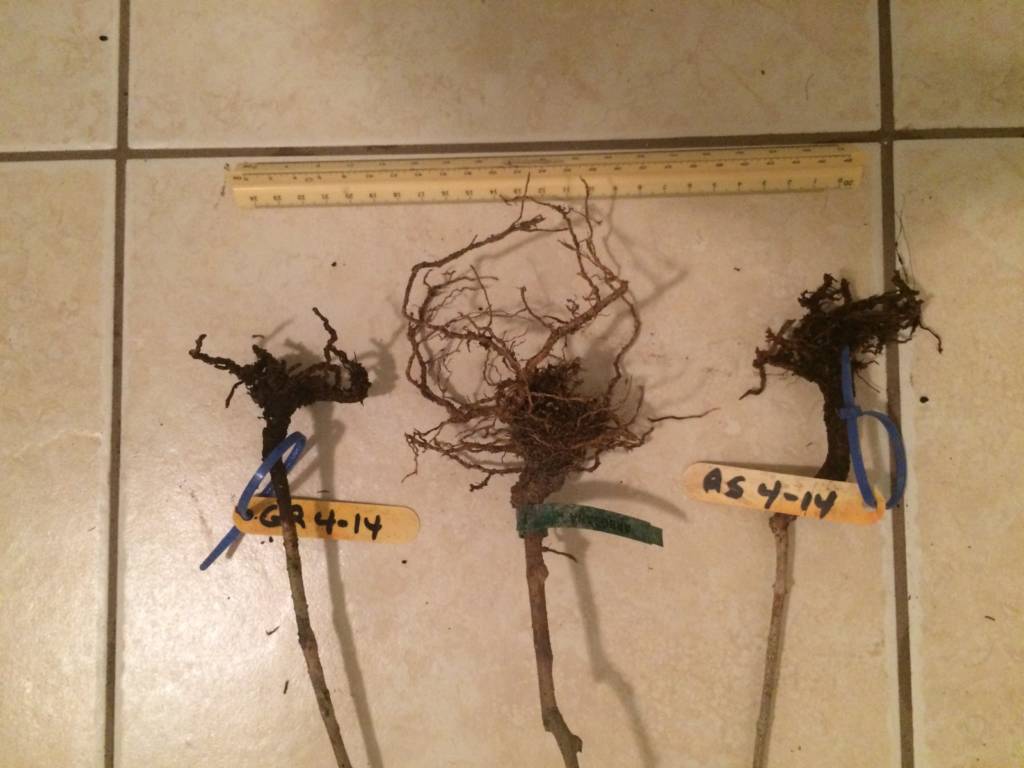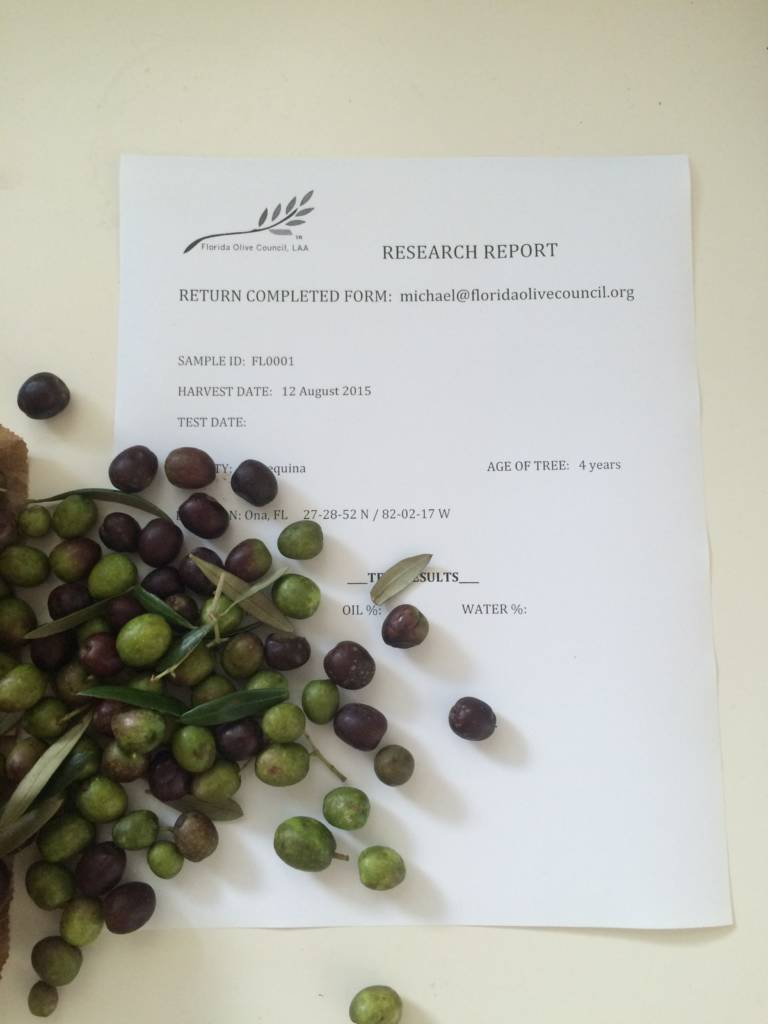Planting Olives in Florida
Overview
Olive trees need well-drained soils and full sun. Thankfully, both are abundant in Florida. While olive trees like water, they do not like “wet feet” so it is best to ensure your land does not have a clay-layer under the top soil. The clay will retard drainage and cause the olive tree roots to suffer; generally killing or significantly retarding growth of the tree.
Pay particular attention to the topography of your land and it’s “chill zone”. Most olives now grown in Florida require 200-300 chill hours* between November and March in order to flower and fruit. If they do not received the requisite chill , they will only bear leaf. Many Florida growers think a gently sloping grove is preferable as it drains better. Other growers think higher elevation and proximity to water sources (lakes, streams, ponds) is important as they might mitigate rapid temperature changes. As you select land with a surface water source nearby, determine if your land is higher than the water source. If not, pay attention to the natural (“historic”) drainage patterns. In years with heavy rains, water sources can overflow and drain onto your land damaging your trees. Prudent land selection preparation is most important. Your Water Management District will have information on flooding in your area. Take your time with land selection. For more information on purchasing land in Florida, click here.
*Chill Hour = One (1) hour between 32° F. and 45° F. (Brief Discussion of Chill Hours)
Digging a Hole
The best time to check for standing water is the day after a good rain or several days of rain in a row. First, get a PhD (post hole digger): Measure 36” from the tip of the blade to a place on the handle. Place a piece of tape or clearly mark the spot and use that mark to measure the depth of several holes you dig around the site you have chosen to plant your olives. If you have a large piece of land, you must dig holes in several locations – high and low spots.
As you dig, if you see a layer of yellowish-brown, thicker soil or standing water in the hole, you probably have a clay-layer. Lay down and reach as deep into the hole as you can and grab a handful of earth. It should be cool and slightly moist – but definitely not wet.
If you see water seeping into the hole from the sides as you dig, the site will probably not be good for olive trees. That said, some growers with lower land have planted their trees on raised beds and had some success; but such methods are risky except perhaps for a single tree here and there in landscape. Others say land with a good slope makes a difference. In any case, well-drained soils are a must.
Weather
While olives are generally considered a warm-weather plant, they need some cool weather to support fruiting. It is generally accepted that stone fruits, like olives, need 200-300 chill hours (chill hour = 1 hour between 32°F. and 47° F.) between November and March to enable vernalization (flower-bud development). The chill hours need not be contiguous but and unusual warming trend in winter particularly over several days, may well negate the accumulated chill and the tree will produce only leaves – no flowers. However, opinions differ on how particular olive cultivars (there are over 1,000 varieties) might respond in Florida. . The Florida Olive Council and others are currently researching various cultivars to find one or two that will reliably fruit in various Florida soils, latitudes and elevations.
Olive trees in Florida may begin blooming in late April or early May. Once the olive tree has flowered, temperatures above 90° F. may burn the flowers and limit production. However, if fruit has set on the tree, the higher temperatures will usually not have a substantially negative impact.
The USDA is experimenting with kaolin clay and similar materials to determine its efficacy in protecting new fruit during intemperate weather. Spraying the trees with certain clay products prior to the onset of vernalization may help the tree resist damage from extreme heat. However, it can create other problems. USDA researchers in Texas sprayed kaolin clay particle film on cotton plants to control aphids. The results were the exact opposite of what was expected. Aphid populations actually increased after kaolin clay applications. Needless to say, this research is not complete.
Watering
Water conditions also affect production. After flowering, the trees need adequate water; however, before budding a reduction in water supply adds some stress that can promote fruiting. However, before applying water to your olive trees it is prudent to conduct basic chemical analysis. Testing irrigation water, particularly for dissolved solids like salt, is very important. Be sure to have your water tested for pH (acidity) and salinity before you plant. A simple test for pH is available at most garden stores. The best results can be achieved by contacting a recognized laboratory. The University of Florida Agricultural Extension Service can point you in the right direction.
The chill map above shows the general configuration of micro-climates in Florida as indicated by historic measurements. The numbers in black refer to average annual hours below 47° F. That said, topography and other elements might serve to modify these estimates. West Florida generally has a higher number of chill hours (660-700) where areas below I-4 are significantly lower.
While evidence suggests substantial olive fruiting will not occur in areas experiencing annual temperatures below 300 chill hours some science suggests otherwise. Like the above mentioned Kaolin Clay application; “rest-breaking agents” like hydrogen cyanamide may partially mitigate the effects of insufficient chilling – but no conclusive studies have been undertaken in Florida. A recent USDA study near McAllen, TX suggests less chilling will still produce a good olive bloom and fruit set if certain cultivation practices are employed to control for heat. However, we underscore these techniques are experimental and not always effective.
While no one knows for certain how different olive cultivars will perform in various Florida chill zones, there seems to be consensus that well-drained soils and full sun are the most important components for vegetative growth of olive trees. How, and in what quantity, fruiting occurs on various olive cultivars in different Florida chill zones is a question to be answered after years of scientific research. What we do know for certain is that olive trees will grow and bear fruit in many areas of Florida.
Elevation
Referencing the Florida topographic map above, the higher elevations in Florida (dark green), those generally having elevation, drained soils and bodies of water can be attractive for olive cultivation. Oranges, grapes and even some olives have been cultivated on these soils for many years. However, this map is not perfect so it is best to consult your local agricultural extension agent and/or UF-IFAS Soil and Water Science department prior to selecting the site for your grove.
Soil Conditions
Prior to planting, the soil should be tested for nitrogen, phosphorus and potash (potassium), sodium, magnesium, calcium, and pH. If available, levels of manganese, zinc, copper, boron and chlorine are nice to have. If there are questions about the history of the soil and existing vegetation shows odd symptoms and poor growth, or if other soils in the area have shown toxic levels of excess minor nutrients; more tests may be needed. In addition, if the risk of nematodes or diseases such as Verticillium wilt is suspected, the soil should be tested for those as well (e.g., trees planted near old tomato land may be at risk). In any case, test, test, test before you plant.
The pH tolerance of olives is quite large, ranging from about 5 to 8.5. However, 6.5 to 7.5 is the generally recommended range. Depending on the size of your planting, it has not been economically worthwhile in most cases to add phosphorus (P) or calcium (Ca) to the soil, since these nutrients are normally in abundance in Florida soils. The exception would be for soils excessively high in Magnesium (Mg). In this case Potassium (K) may be needed for olives, and it can be added prior to planting. Nitrogen is almost always added after planting. Potassium (K) is an important element in olive growing. Some science suggests soils high in boron (Bo), sodium (Na), or chloride (Cl) should be avoided.
Multiple sub-samples should be taken from at least two depths with the root zone at about 6 inches and 18 inches deep. This should be done for each observable soil type in the orchard. Do not rely on home soil testing kits. Ask your county UF/IFAS extension agent for soil sample bags and to recommend a procedure for gathering the soil sample and conducting the tests properly. In general, most soil labs will be able to advise you on which tests to run if you tell them what crop you are growing and the location of your land. Beware of exaggerated yield or plant health claims by fertilizer and compost sales people. Olives grow where there is sun and drained soils. They generally require little fertilization.
Summary
Selecting an olive rove site in Florida is not an exact science. There are many factors that may significantly influence success but full sun and good soil drainage are paramount. Tom Oleson, a long-time Florida olive grower, suggests sloping land promotes good drainage and a nearby body of water might create a micro-climate offering a slight warming effect in winter to help balance irregular chilling and freeze patterns. Good site selection, careful soil and water analysis, appropriate cultivar selection and proper cultivation practices will offer the best chance for success.
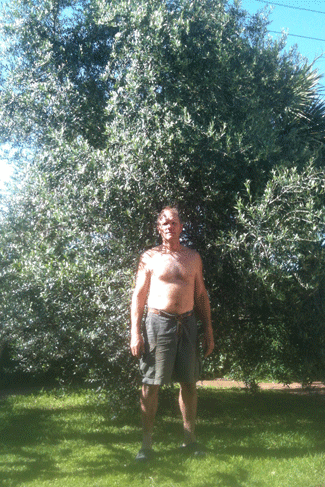
Henri Bos – St. Augustine, FL
Although many believe the Florida highland areas and areas in the Florida panhandle are most suitable for olives, there are other areas where olives seem to do quite well. Generally, the Arbequina seems to be able to bloom and fruit in most areas of Florida. Sufficient chill is required for flowering and subsequent fruit set.
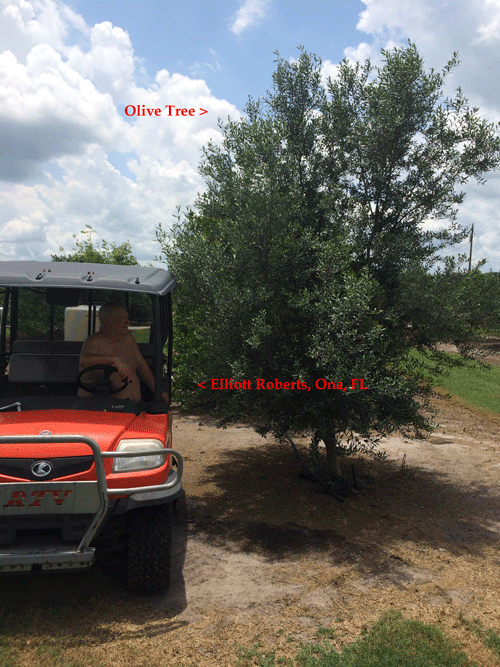
Elliott Roberts – Ona FL
In the example at left, Henri Bos, a craftsman, builder and part-time olive grower, stands in front of his 6 year old Arbequina olive tree growing 300 yards from the Atlantic Ocean at St. Augustine Beach, a location designated generally as lowlands on the soil map above. At right, Elliott Roberts, a citrus grower near Ona, FL has a 7 year olive Arbequina that has bloomed and fruited several times. At right is a Florida Olive Council field report with samples of Arbequina from Roberts tree in Ona.
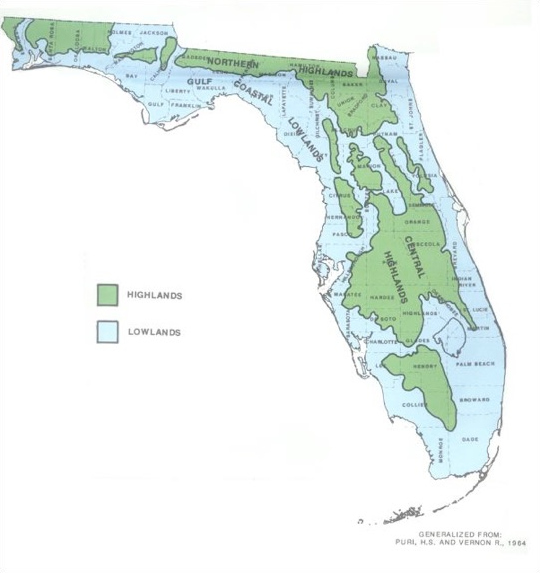
Florida Topography
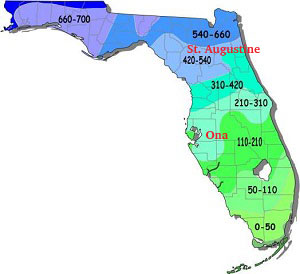
Florida Chill Map-St. Aug and Ona
We need your help
The Florida Olive Council is a non-profit organization certified under Federal tax code 501(c)(3) and Florida statutes Chapter 617. We are supported by your contributions. Ninety-five (95%) of your donation goes directly to supporting olive research. Our directors and officers receive no salary or other compensation. Donate
